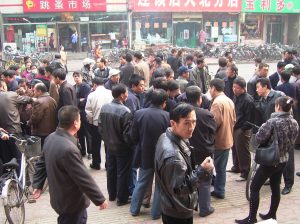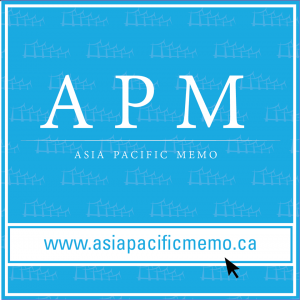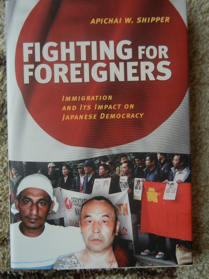Why do Chinese Migrants Have to Pay so Much to Work Overseas?
Memo #135 – Unskilled workers from China have to pay exorbitant costs to work abroad in Japan, Singapore, and South Korea, their top three choices. Fees, averaging 8,000 USD, are not charged by human smugglers but licensed employment intermediaries. In fact, transnational labour migration through legal channels costs significantly more than illegal migration. This is not unique to China. Across Asia, the percentage of legal migrants is increasing – more than 800,000 Chinese by the end of 2011 compared to less than 60,000 in 1990. Why is the cost increasing? Because Asian states rely on intermediaries.
为什么中国人出国打工费用这么高?
Memo #135 – 日本,新加坡和韩国是目前接纳中国非技术劳工最多的三个国家;中国人去这三个国家打工,要付8,000美元的中介费。这些钱不是给人贩子,而是给有正规执照的中介机构。事实上,通过合法途径出国打工的成本要明显高于非法迁移。这并不是中国特有的现象。在亚太地区,合法移民的比例在增加——2011年底有80多万中国人在境外就业,大大高于1990年的6万人——但是成本也大幅度增加了。其原因就在于,亚太国家依赖于中介机构管理跨国劳动力流动。
Filipina Immigrant Girls’ Lived Experience in Japan
Memo #134 – Filipina women, who entered Japan as “entertainers” or as the spouses of Japanese men, sometimes left children behind to be raised by relatives in the Philippines while they built economically viable lives in Japan. More and more, the teenage children of these migrant women are entering Japan, entering Japanese schools, and entering society as an important and recent immigrant youth population. These youth are being reunited with their mothers, beginning lives with unknown step-families, and struggling to learn Japanese – which is often their third or fourth language. Most scholars focus on how immigrant youth are victimized by an assimilationist-oriented education system, with its Japanese-only language policies and hyper-competitive high school entrance exams. But this focus allows only a small glimpse of their lived experience.
Becoming a Commercial Marriage Broker in Malaysia
Memo #133 – In the last two decades, East Asian countries have experienced a dramatic rise in international marriages. Much of it is between men in the wealthier countries of Japan, South Korea, Taiwan, and Singapore, and women from poorer countries in the region. Among Chinese Malaysians, the number of marriages between the men and Vietnamese women increased from 28 in 2001 to 1,185 in 2005. To explain this increase, the media began to cover the proliferation of commercial matchmaking agencies in the early 2000s. But the role that Vietnamese wives play in the matchmaking business has attracted little attention.
South Korea’s Immigrant Incorporation Strategy
Memo #127 – In July 2002, the mayor of Seoul conferred honourary residency status on Guus Hiddink, a Dutch soccer manager who advanced the Korean soccer team to the World Cup quarter finals. In contrast, in October 2009 the government deported Minu, a migrant worker and activist from Nepal, who had lived in Korea for 18 years and had been active in organizing migrant workers. These two vignettes demonstrate how the Korean government treats immigrants differentially.
한국정부의 이민자 정책
Memo #127 – 2002년 월드컵의 열기가 채가시기 전인 2002년 7월에, 서울시는 당시 대한민국 축구 국가대표팀 감독이었던 거스 히딩크 감독에게 명예 서울 시민증을 수여했다 반면 2009년 10월 한국에 18년 동안 있으면서 이주노동자 운동에 앞장섰던 네팔인 미누씨를 강제추방했다. 이 두 사건은 한국 정부의 차별적 이주자 정책을 단적으로 보여 준다.
The Philippines’ Labour Export Policies – Pros and Cons
Memo #122 – The Central Bank of the Philippines announced recently that despite the global economic crisis, remittances from Overseas Filipino Workers (OFWs) would hit $20 billion by the end of 2011. This is seven per cent higher than in 2010 and raised foreign exchange reserves to $76 billion, resulting in a $9 billion surplus in the country’s balance of payments. What lies beneath the surface of such good news?
Foreign Workers and the Wildfires of Democracy in East Asia
Memo #111 – As democratic movements spread to the Middle East and North Africa, hopeful observers and nervous authoritarian leaders wondered when they will reach Asia. In fact, they already arrived there in the late 1980s. But another East Asian democratic revolution has been taking place over the past decade, brought about by foreign workers.
The Middle Mountain of the Xinhai Revolution
Memo #104 – Growing up in Canada, my relatives would always remind me that my family came from the same county as Dr. Sun Yat-sen, the “Father of China”, when I was picked on by other kids because I was Chinese. This seemed like cold comfort. But it turns out that my relatives understood the relationship between the rise of modern China and the role of the overseas Chinese.
Ending Islamic Solidarity in Post 9/11 Pakistan: New Restrictions on Migrants
Memo #100 – The rise of the “security state” is not just a Western phenomenon. Post 9/11 Pakistan has seen a proliferation of new surveillance technologies that created social divisions and marginalized long-term migrants previously welcomed in the name of Islamic solidarity.




